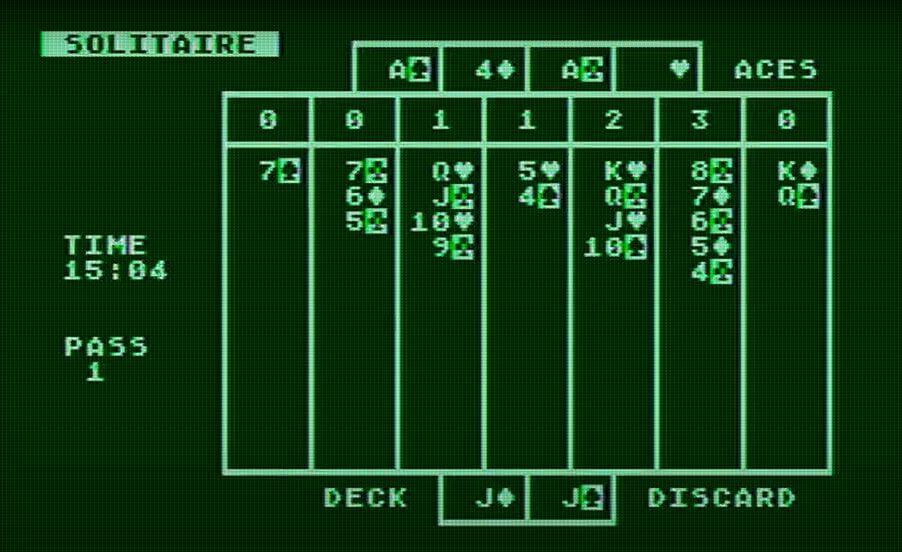Home / Blogs / The History of Solitaire
The History of Solitaire
By Mike - 10/13/2022
Ah, Solitaire. There are few better or more peaceful ways to spend an afternoon than sitting in a quiet room, sunlight streaming in through an open window and shuffling a deck of cards to play a few rounds of this timeless game. There is just something about organizing the foundations and sorting the cards that can make the stress of everyday life melt away, even if it’s just for a little while.
And we as humans have been playing Solitaire for a long time. The game has been around for so long that many generations have taken the game’s presence in their lives for granted. But did you know that the actual origins of this enduring card game are quite vague? No one is sure where the game started or how it morphed into what we have today.
So in this blog post, we will go on a voyage into the past to try to examine the possible inception points in history for our favorite card game, be it the physical or many digital versions. We will also be tracing those roots back to their earliest point to examine the titles that brought it to our favorite devices.
Are you ready to go on a card-based adventure like nothing you’ve ever experienced? Join us as we attempt to discover the history of solitaire.
Card Solitaire
The first of a few theories regarding the origins of Solitaire is that it comes from France, around the 18th century. That makes sense, right? Some of the words associated with the game and how it functions are French in origin (tableau comes to mind). In fact, the earliest recorded name for the game we know today was Patience, a word that originates from the Old French “Patiens.”
Over time, the actual name of the game became interchangeable with Solitaire, Klondike, Canfield, and the like, but Patience seems to be the oldest name. One fun little story, that is in no way confirmed, is that the game was invented by a French nobleman during the French Revolution. Alone in his cell with nothing but a deck of cards and time on his hands as he waited for his beheading, he developed Solitaire (or Patience) to pass the time. It’s speculated that the game then spread among the other prisoners and finally outside the prison walls to the general public, which sparked the game’s expansion.
 Another interesting possible origin also goes back to the 18th century, where a rudimentary version of Solitaire was thought to be used as a type of fortune-telling ritual, similar to what we now know as Tarot Reading. It was thought that if the game was able to be solved or won, then the target player’s wishes would be granted.
Another interesting possible origin also goes back to the 18th century, where a rudimentary version of Solitaire was thought to be used as a type of fortune-telling ritual, similar to what we now know as Tarot Reading. It was thought that if the game was able to be solved or won, then the target player’s wishes would be granted.
However, if you aren’t a fan of the possible French origin or cartomancy, then perhaps you’ll subscribe to the theory that Solitaire was invented in Germany. While the game might have been played and enjoyed by many before this time, the actual description and rules of Patience were first seen in an anthology of games called Das neue Königliche L'Hombre-Spiel. It was written around 1788 by a German author.
Regardless of what the true origin of Solitaire actually is, there’s no denying that it has since taken over the world. Through the ages, the game has been included in many compendiums of games, including its first-ever appearance in the U.S.: Patience: A Series of Thirty Games with Cards, a book was released in 1870.
Then, in 1913, the Official Rules of Card Games introduced the world to Klondike Solitaire. This variation of the game turned out to be the one that would spike Solitaire’s popularity once more and become the most-played version of Solitaire around the world. So popular, in fact, that it was the version that became the first digital Solitaire.
Digital Solitaire
In 1981, a hobbyist coder and Atari-user named Mark Reid brought the very first version of Solitaire to a digital platform. It was coded and released as a part of the Atari Program Exchange, where other users like Mark were able to share their creations.
 His version of Solitaire was an 8-bit rendition of Klondike that was rudimentary at best as it required every single action to be done manually, lacking the automation later versions would be known for, but it was still revolutionary for its time, especially for something that was created by a single, non-professional coder.
His version of Solitaire was an 8-bit rendition of Klondike that was rudimentary at best as it required every single action to be done manually, lacking the automation later versions would be known for, but it was still revolutionary for its time, especially for something that was created by a single, non-professional coder.
In 1984, just a few years later, a more professional version of digital Klondike was released for the newly-launched Macintosh Computer. This version was created by Unison Software and had actual visual representations of the cards you were playing with, unlike the previous version, which only displayed letters, numbers and icons. It also had features that included automatic card return and highlighted possible moves based on the cards you drew.
Next up was Spectrum HoloByte’s Solitaire Royale for the Apple II, which was released in 1987. This game was a generational leap over the previous entries, and included eight different solitaire games, colorful graphics and digital sound effects to boot.
But all those versions pale in comparison though to the grand daddy of all digital Solitaire games: Microsoft Solitaire. The final evolution of digital Solitaire was created by a Microsoft intern named Wes Cherry, who was never paid for his creation, despite it becoming one of the most played games in history. The game was originally released in 1990, and by its 30th anniversary in 2020, it had an estimated 35 million active players every month, and over 100 million games played every single day.